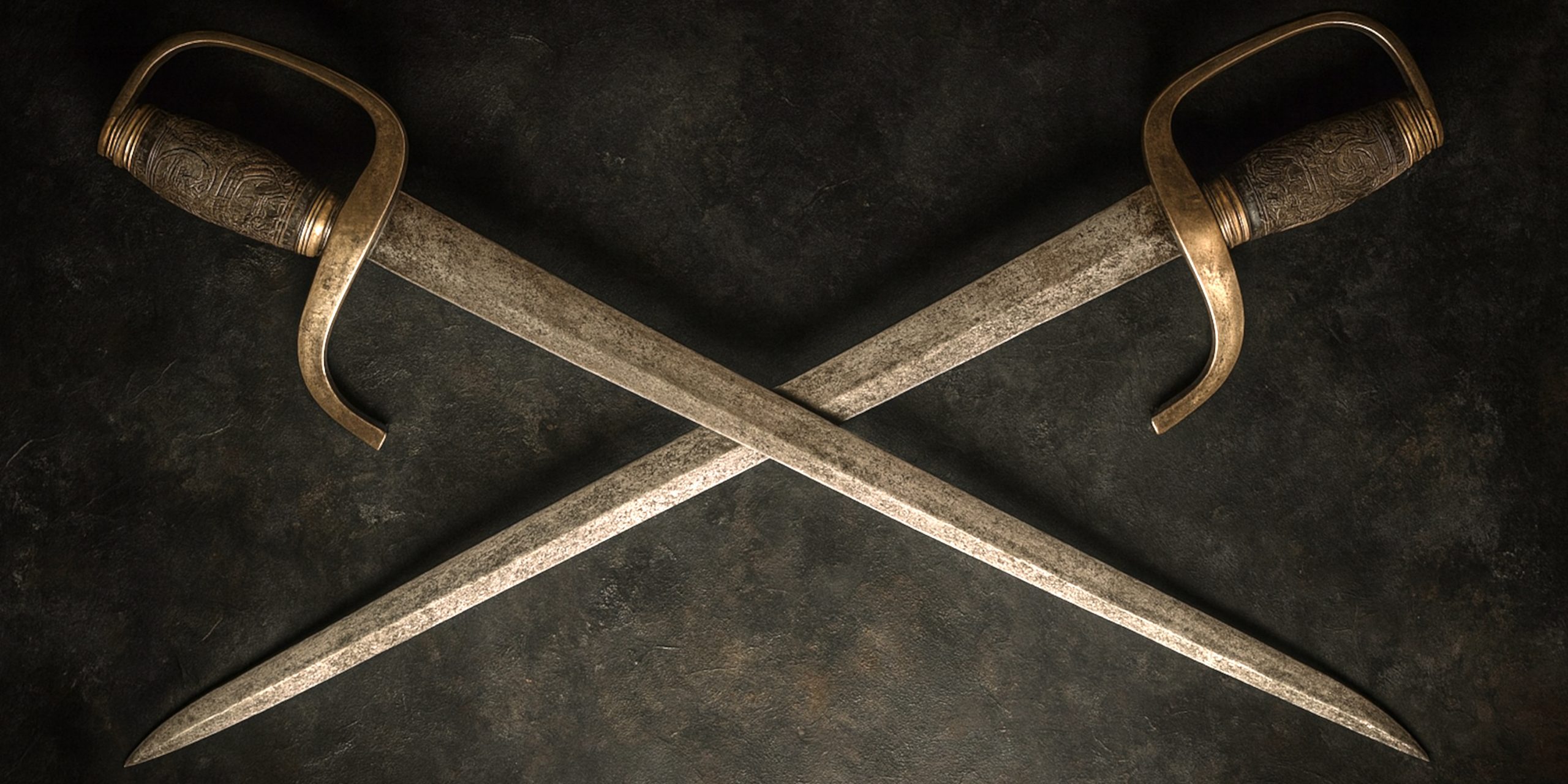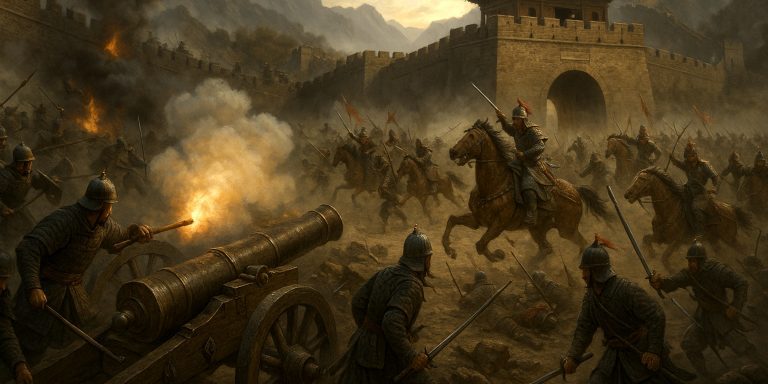
The Hudiedao, often referred to as “butterfly swords,” is one of the most recognisable double weapons from southern China. Traditionally paired, these short swords were used by martial artists, militias, and sometimes even rebels during the Qing dynasty. Their practical size, distinctive handguards, and versatility made them suitable for both training and real combat. Today, they are a cornerstone of southern Chinese martial arts, especially Wing Chun.
Specifications
| Feature | Details |
|---|---|
| Origin | Southern China, primarily Guangdong |
| Period | Late Qing dynasty (18th–19th century) |
| Typical Length | 28–38 cm blade length (usually matching forearm length) |
| Blade Type | Single-edged, straight or slightly curved |
| Guard | D-shaped knuckle guard, often extended into a quillon |
| Grip | Wooden scales, sometimes wrapped in cord or leather |
| Weight | Around 0.9–1.2 kg per sword |
| Carrying Style | Usually carried as a pair in a single sheath |
| Fighting Style | Primarily close-range, slashing and trapping techniques |
History and Evolution
- Origins: The Hudiedao emerged during the late Qing period in southern China, particularly in Cantonese communities. They were practical urban weapons for militias and civilians rather than elite military officers.
- Martial Arts Role: The swords became tied to southern martial arts systems such as Wing Chun, Hung Gar, and Choy Li Fut. Their short, manoeuvrable form suited close-quarters combat in narrow alleys and crowded cityscapes.
- Rebellion and Civil Defence: They were often employed by militias and anti-Qing rebels, reflecting their association with local resistance rather than imperial power.
- 20th Century and Beyond: During the Republic of China era, they were kept in martial arts schools as training weapons. Today, they are largely ceremonial, used in demonstrations, and crafted for collectors.
Advantages and Disadvantages
Advantages
- Compact and easy to conceal compared to long swords.
- Can be wielded as a pair, allowing simultaneous attack and defence.
- D-shaped guard protects the hand and allows trapping of enemy weapons.
- Effective in tight spaces, ideal for urban combat.
- Strong cultural and martial arts associations enhance their prestige.
Disadvantages
- Limited reach compared to spears or long sabres.
- Less effective against heavily armoured opponents.
- Designed for short-range fighting, making them situational in open battlefields.
- Heavier than some other paired weapons, requiring good conditioning for extended use.
Comparison with Similar Weapons
| Weapon | Similarities | Differences |
|---|---|---|
| Dao (Chinese sabre) | Both single-edged blades with chopping focus. | Dao is longer and suited to battlefield combat, Hudiedao better for urban close-quarters. |
| Shuangdao (paired sabres) | Both used in pairs. | Shuangdao are full-length sabres, less concealable and heavier. |
| Niuweidao (ox-tail sabre) | Common civilian weapon in late Qing. | Usually single, heavier chopping blade, not paired like Hudiedao. |
| Butterfly knives (modern) | Inspired in name and dual style. | Folding pocket knife form, unrelated structurally or historically. |
Legacy
The Hudiedao has transcended its original purpose as a street-level self-defence weapon. Today, it symbolises southern Chinese martial culture and remains one of the iconic training weapons in Wing Chun. Its dual-wield style influenced cinematic depictions of kung fu weaponry and is often seen in martial arts films. Beyond the screen, its cultural weight keeps it relevant in martial training halls across the world.
Where to See Hudiedao
- Hong Kong Heritage Museum – Exhibits of martial arts weapons, including Hudiedao.
- Guangdong Museum – Displays late Qing militia arms from southern China.
- Private Martial Arts Schools – Many Wing Chun associations worldwide maintain traditional Hudiedao.
- Online Collections – Auction houses and private dealers frequently offer antique examples.
Collectors Guide
Collectability
- Antique Hudiedao are desirable for collectors of Chinese arms due to their strong martial arts link.
- Condition, provenance, and craftsmanship significantly affect value.
- Some have ornate guards and blades, while others are purely utilitarian.
Auction Prices
| Condition / Type | Typical Price Range |
|---|---|
| Functional antique pair (19th c.) | £800 – £2,000 |
| Ornately decorated pair (with inlay or inscriptions) | £2,500 – £5,000+ |
| Modern training reproductions | £100 – £300 |
| Museum-quality examples with provenance | £6,000+ |
The Seven Swords Takeaway
The Hudiedao represents a practical, cultural, and martial legacy of southern China. Its compact dual-wielding form gave ordinary people a way to fight back in the alleys of Guangzhou, while its role in Wing Chun cemented its iconic reputation. For collectors, martial artists, or historians, the Hudiedao is more than just a pair of short swords. It is a window into how everyday people armed themselves and left behind a distinctive mark on Chinese weapon history.



